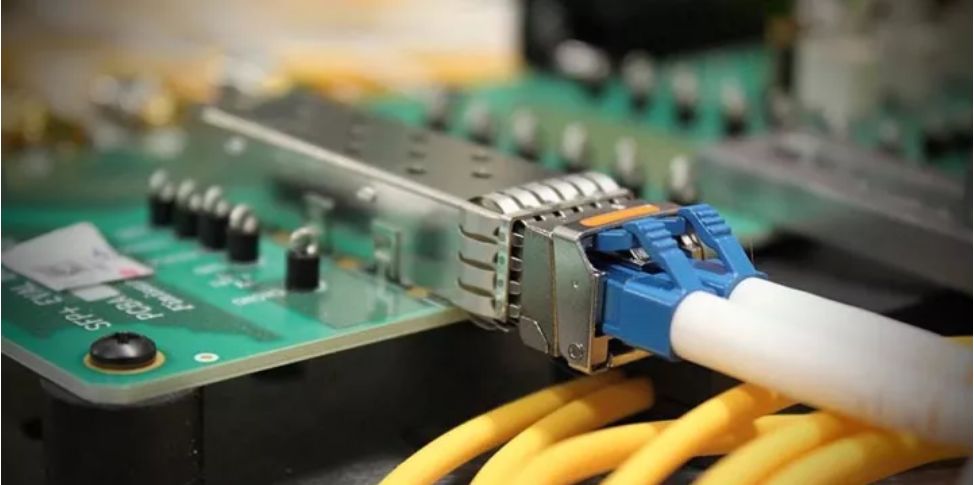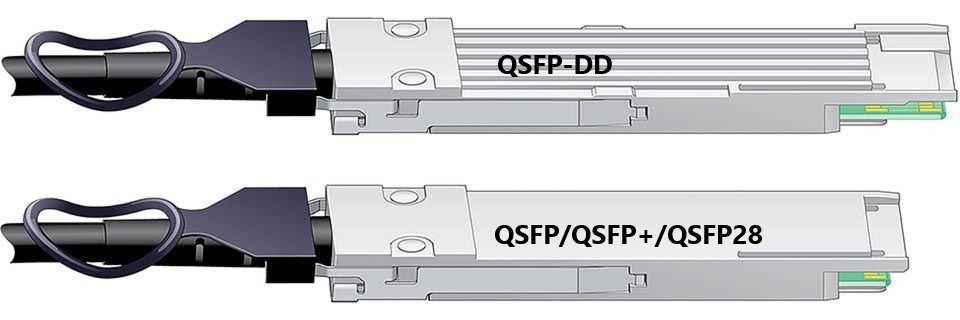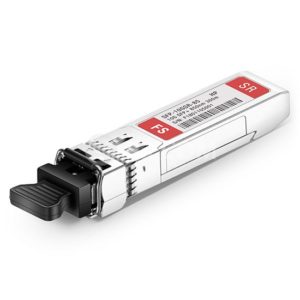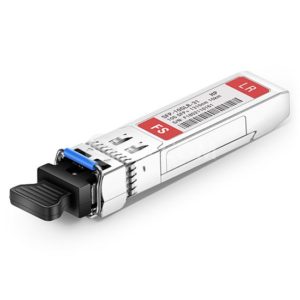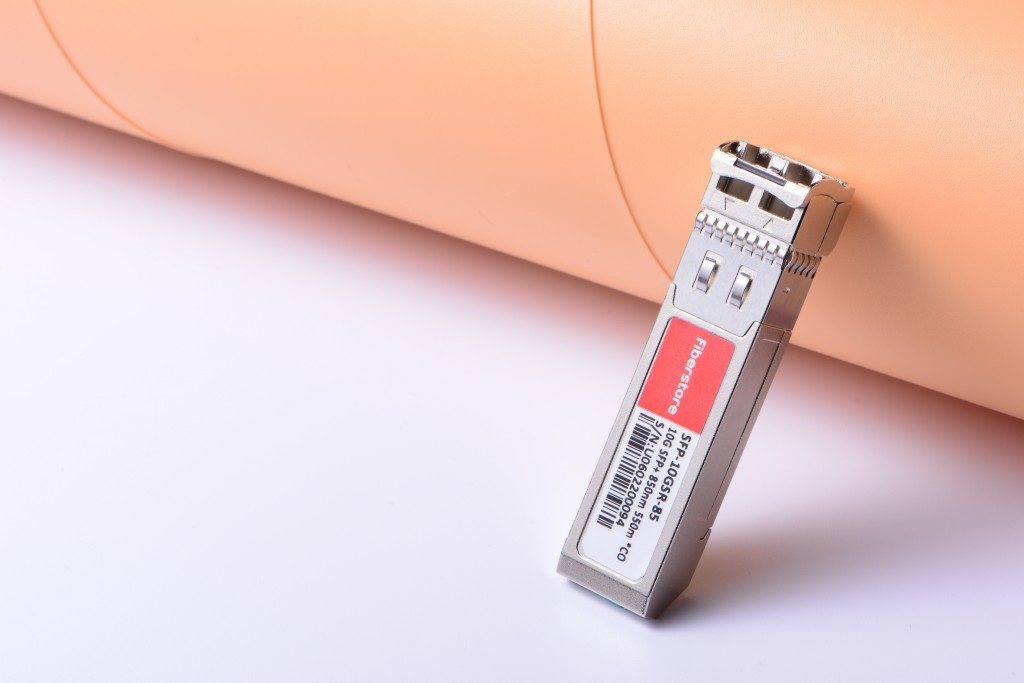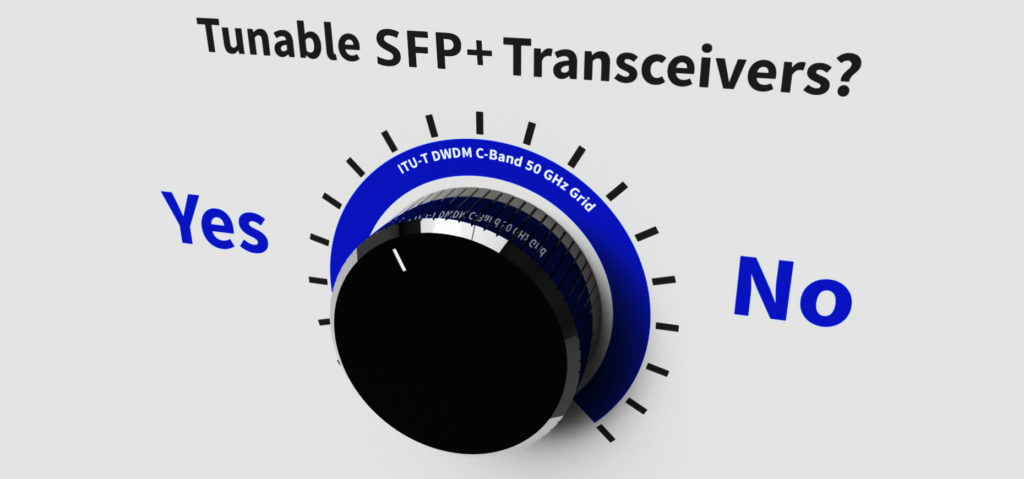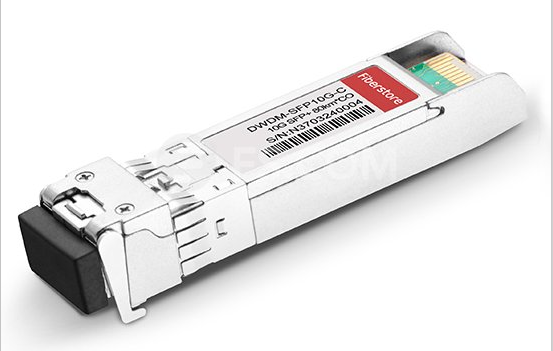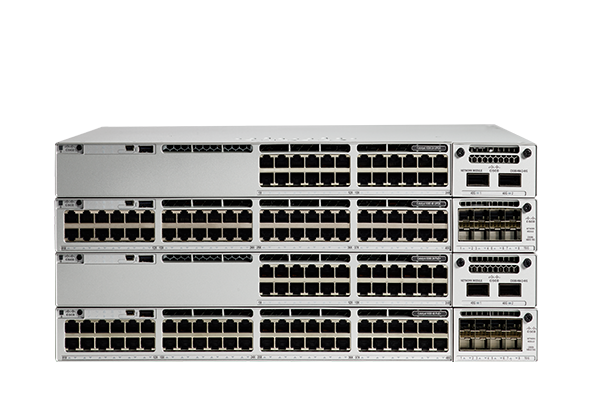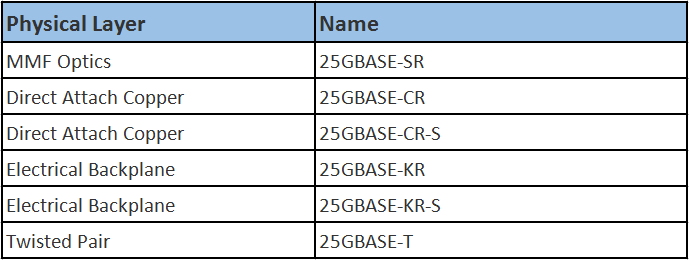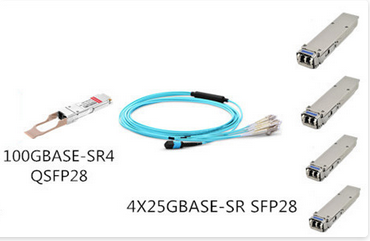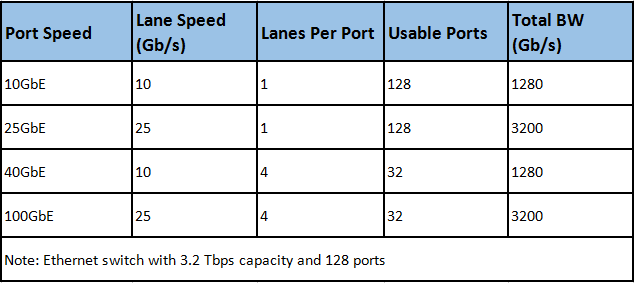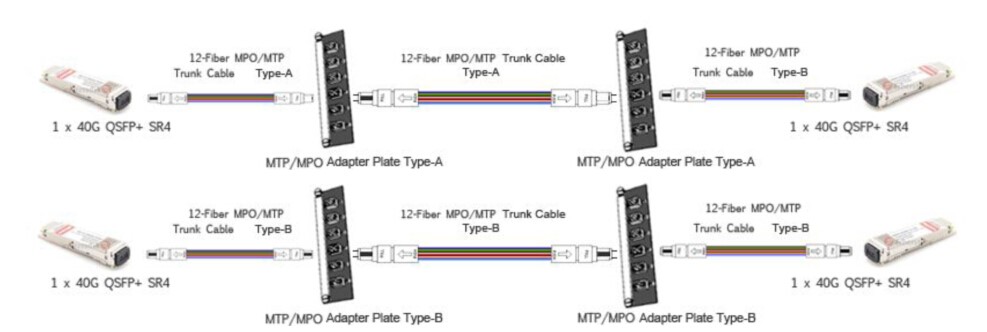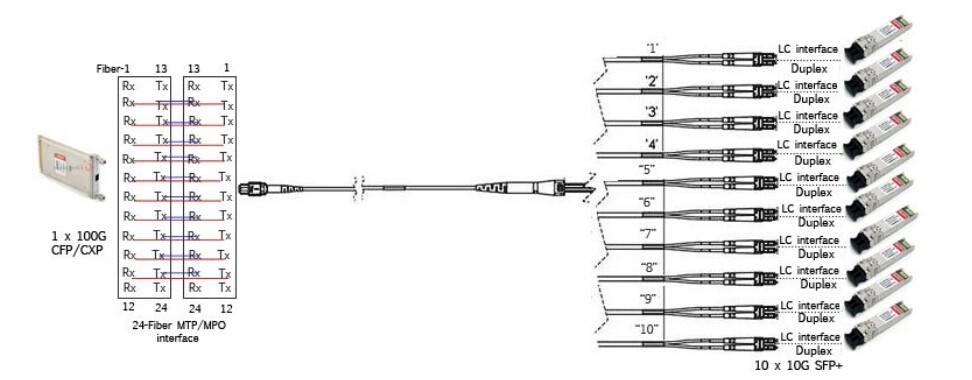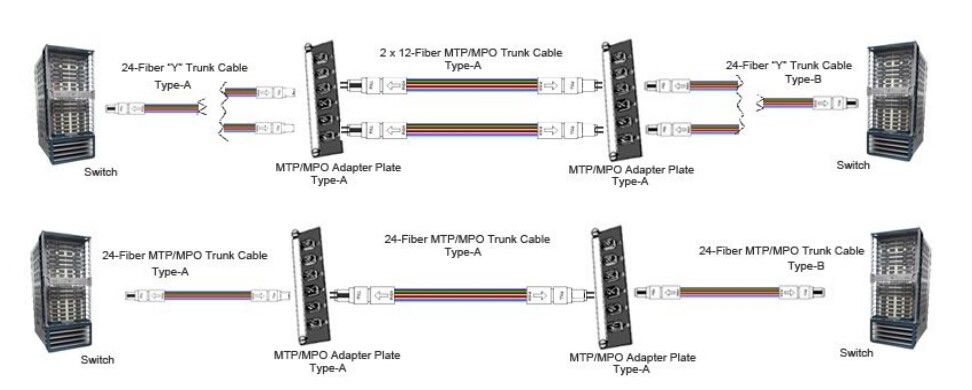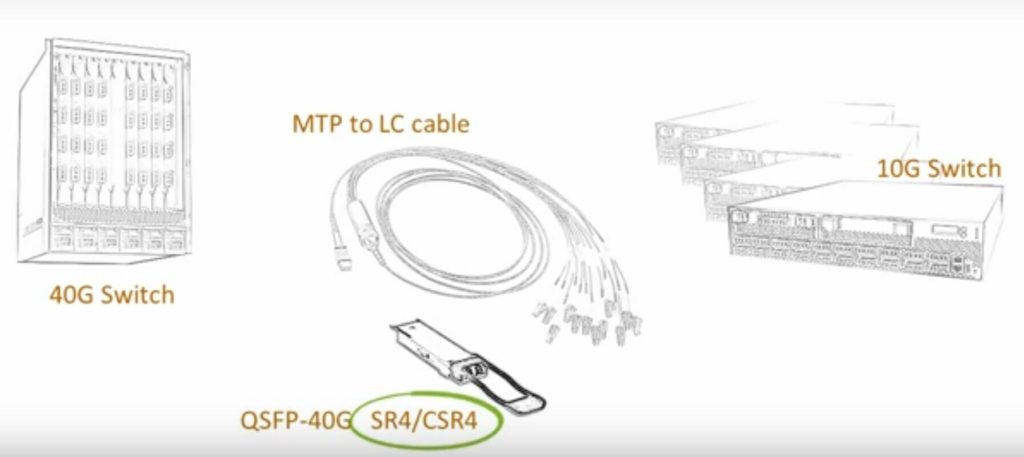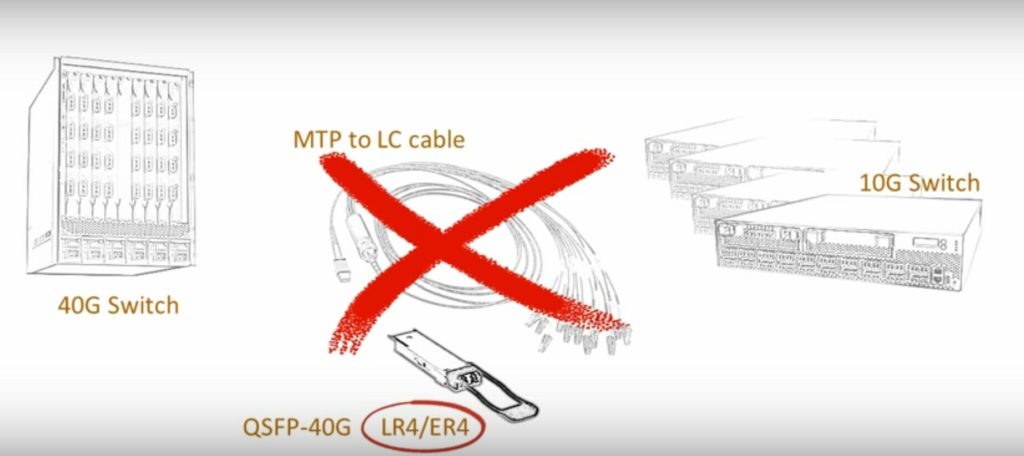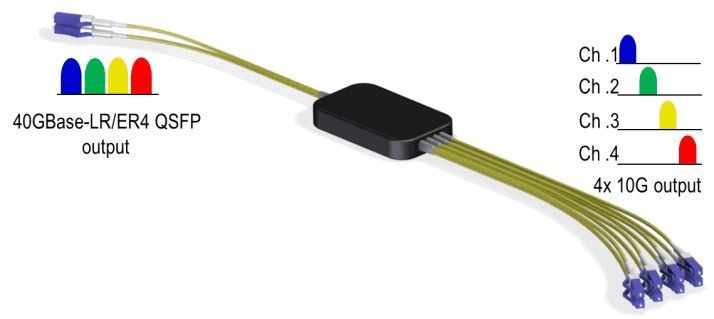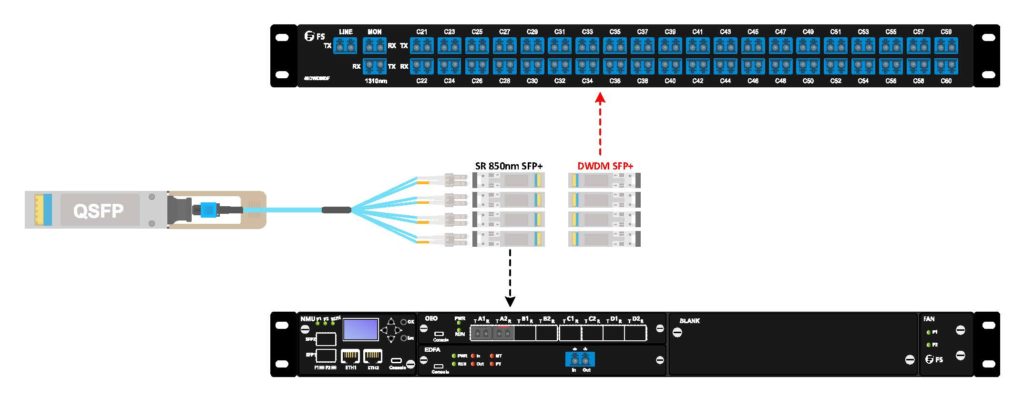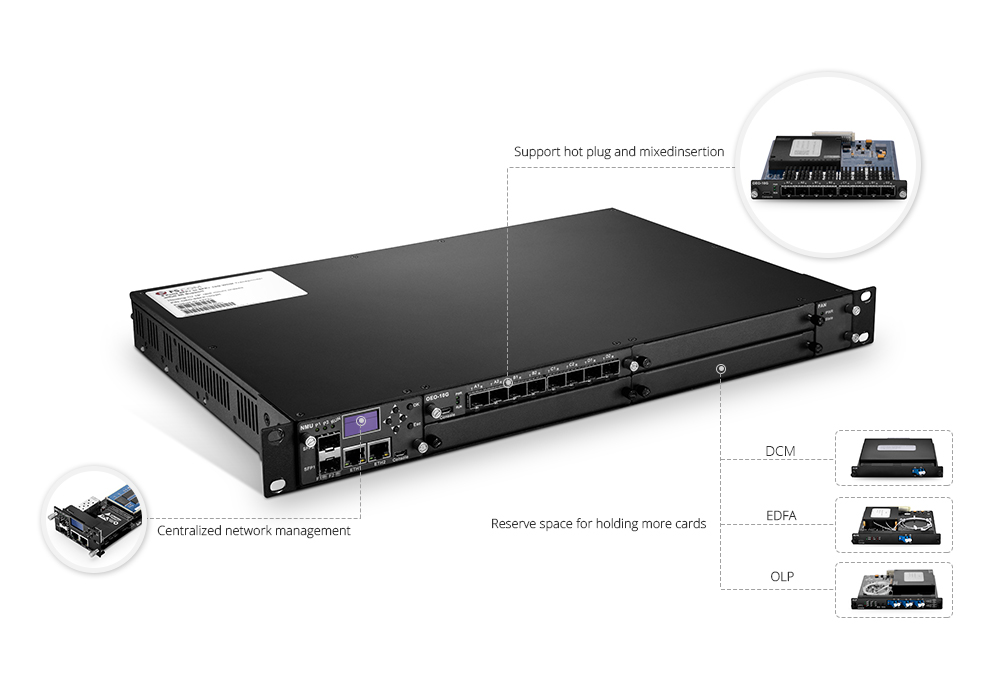Optical transceiver is one of the most important elements in data centres. Currently, QSFP28 transceiver module is the leading product on the market that supports 40 and 100 Gigabit Ethernet application. However, the world is constantly changing and evolving, new applications such as 4K HD video, webcast, VR and cloud computing have driven a sharp growth of network traffic. Therefore, today, QSFP56 and QSFP56-DD are developed to provide 200G or 400G applications, in order to satisfy people’s higher transmission speed.
Introduction of QSFP
In order to have a good understanding of QSFP56 and QSFP56-DD, we’d better know what QSFP is first. QSFP means Quad Small Form-Factor Pluggable, which is a compact, hot-pluggable transceiver. It’s an industry format that is developed and supported by many network component vendors, and it’s widely used to connect network switch, computer, server, video and some other communication systems. QSFP, QSFP56 and QSFP56-DD transceivers share the same package form, but their transmitting rates are different. This has lead to some other differences such as functions and applications, which will be explained in the following parts.
What Is QSFP56 Transceiver Module?
QSFP56 optical transceiver is the solution for 200G applications. It’s a pluggable transceiver module that has the same size as QSFP. However, this 200G transceiver can provide the top data rate of 50Gb/s of each channel. In addition, products of the transceiver will be compatible with previous QSFP standards. Therefore, the data centres are able to reuse and easily refresh their systems designs and cost in an effective way. Communication specialists forecast that QSFP56 transceivers may accelerate the upgrade of the next generation network switches that the density of their front panel would be doubled, which will create more network throughput. QSFP56 will be the most competitive product due to its powerful processing capacity.
Figure 1: Example of QSFP56 Transceiver Connection
What Is QSFP56-DD Transceiver Module?
QSFP56-DD refers to a double-density QSFP optical transceiver that supports 200Gbps and 400Gbps Ethernet applications. It’s designed to employ eight lanes that operate up to 25Gb/s NRZ modulation or 50Gb/s PAM4 modulation. This means the new 400Gbps optical transceiver will increase the bandwidth and panel density by several times compared to the similarly sized QSFP transceivers. It’s based on the widely applied QSFP interconnection system, which is particularly suitable in data centres and HPC centres. In addition, this transceiver provides backward compatibility to lower-speed QSFP forms, so that when the technicians need to upgrade their networks to a higher speed, they could continue to use the other existing cabling infrastructure.
Figure 2: QSFP-DD vs QSFP
Conclusion
Traffic growth for data centres operators and service suppliers requires the adoption of 200G and 400G optical interfaces in the next generation of network devices. QSFP56 and QSFP56-DD transceiver modules are the best innovations to support customers with high speed and reliable connections. With these optical transceivers, technicians are able to achieve a breakthrough in network transmitting capability. We believe that the applications of QSFP56 and QSFP56-DD are the general trend in the future.
Related Article: Global Optical Transceiver Market: Striding to 200G and 400G

